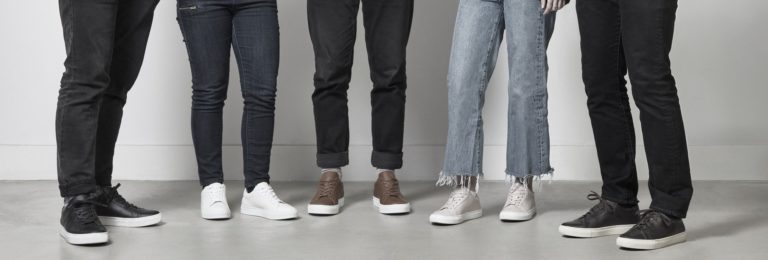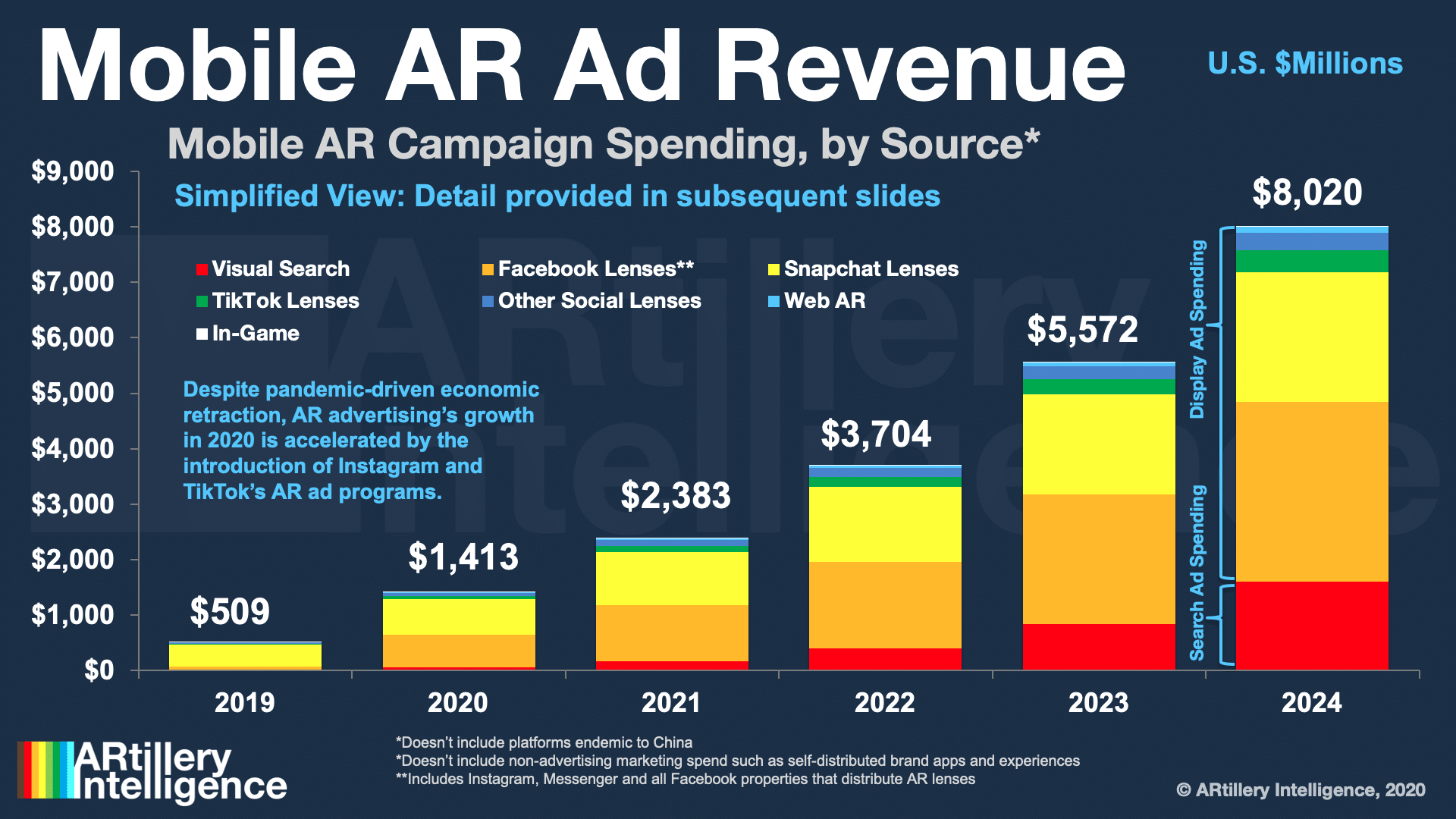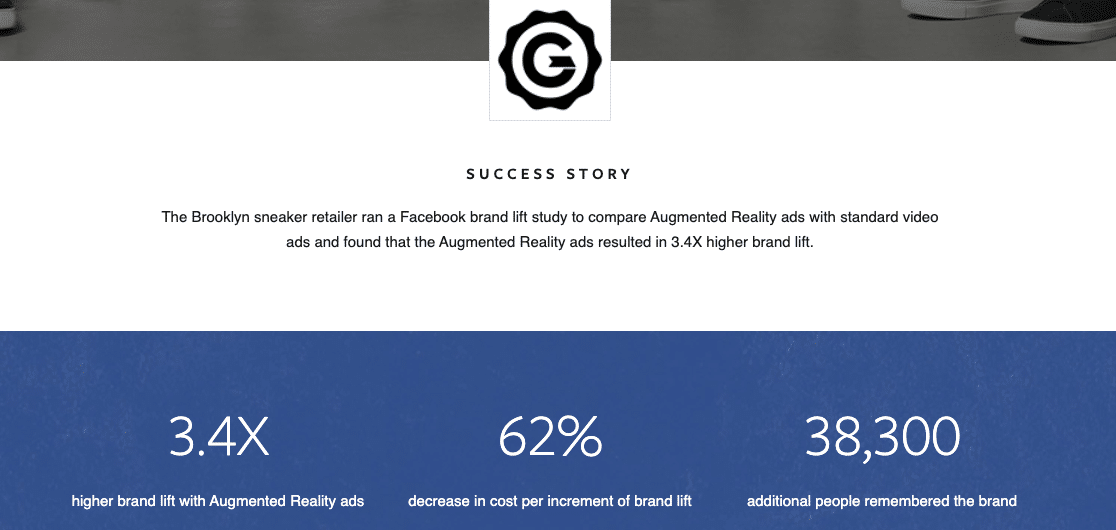
AR continues to evolve and take shape as an industry. Prominent sectors include industrial AR, social, gaming, and shopping. But existing alongside all of them is AR advertising. This includes paid/sponsored AR lenses that let consumers visualize products on “spaces & faces.”
Advertising is one of the most lucrative AR subsectors, on pace to reach $1.41 billion this year and $8.02 billion by 2024. These figures measure the money spent on sponsored AR experiences with paid distribution on networks like Facebook and Snapchat.
As our research arm ARtillery Intelligence examined in a recent report on AR advertising, adoption drivers include brand advertisers’ growing affinity for AR. Its ability to demonstrate products in 3D resonates with their creative sensibilities, transcending common 2D formats.
To continue the narrative and “show rather than tell,” part II of that report features case studies that map to various stages of the consumer purchase funnel. What do AR ads look like today, what’s the concrete ROI, and what are strategic takeaways for campaign execution?

Total Recall
Starting our analysis at the top of the consumer-purchase funnel, what are best practices in using AR to amplify brand messaging or product awareness on a large scale? Who are the exemplars? What are the results they’re achieving? And how are they getting those results?
Picking up where we left off last week in looking at Ally Bank’s AR ad campaign, we’ll move on to the next case study: GREATS Shoes. Through a Facebook AR lens campaign, the company achieved a 3.4x brand lift over its campaign benchmark of standard video ads.
In absolute terms, that brand lift equates to 38,300 additional people who remembered the brand after experiencing the lens. This is known in the ad analytics world as brand recall — a key metric for awareness-based advertising. AR continues to show efficacy on this front.
This has a lot to do with AR’s inherent levels of immersive engagement that can create a lasting impact on memory. In a recent study published by Zappar and Neuro-Insight, it was demonstrated that AR can achieve 70 percent greater memory encoding than non-AR media.

Lessons & Learnings
So what were the qualities of the campaign itself? GREATS was interested in cultivating more brand awareness and more fans of its handmade full-grain leather shoes. The company chose Facebook AR lenses along with video ads that carried the same creative concept.
The multi-platform approach not only allowed it to reach more users, but to compare results and see AR’s impact. It also gave AR a delivery vehicle and launch point, as activations happened as an optional engagement on the brand’s videos, distributed on Facebook’s News Feed.
Once the front-facing camera was activated, selfie overlays carried the campaign’s creative concept of a cheeky and self-referential “This is an AR ad” message (see it here). Users could play with animations that reacted to facial expressions. Social attributes also propelled distribution.
News Feed placement was based on demographic targeting for GREATS’ highest lifetime-value customers. This is known as lookalike targeting — zeroing in on demographics in one channel that represent groups with proven brand loyalty from other channels.

Advertiser Acclimation
Along with the above metrics, GREATS’ shoe campaign was able to achieve a 62 percent reduction in cost per increment of brand lift. So not only did it help the brand achieve greater brand recall, but it did so in a way that was more cost-efficient than other digital media like video.
These strengths as a branding and awareness medium are coupled with AR’s capacity (shown elsewhere) to drive conversions through product try-ons. This traces back to the above assertion that AR ads can span the purchase funnel from impression to action.
This ability to combine reach with high engagement is somewhat rare among ad media. The inherently-social attributes also propel distribution through virality. But despite these attributes, there’s doubt among brand advertisers — meaning that more education and proof points are needed.
That adoption will cycle into the relatively laggard and comfort-zone bound Madison Avenue, just as it did for mobile advertising. This is happening to the tune of $1.4 billion in projected AR ad revenue this year according to our research arm ARtillery Intelligence (see above).
We’ll pause there and circle back in the next installment with another case study. Meanwhile, check out the full report here, and get more color in the video below.

